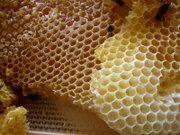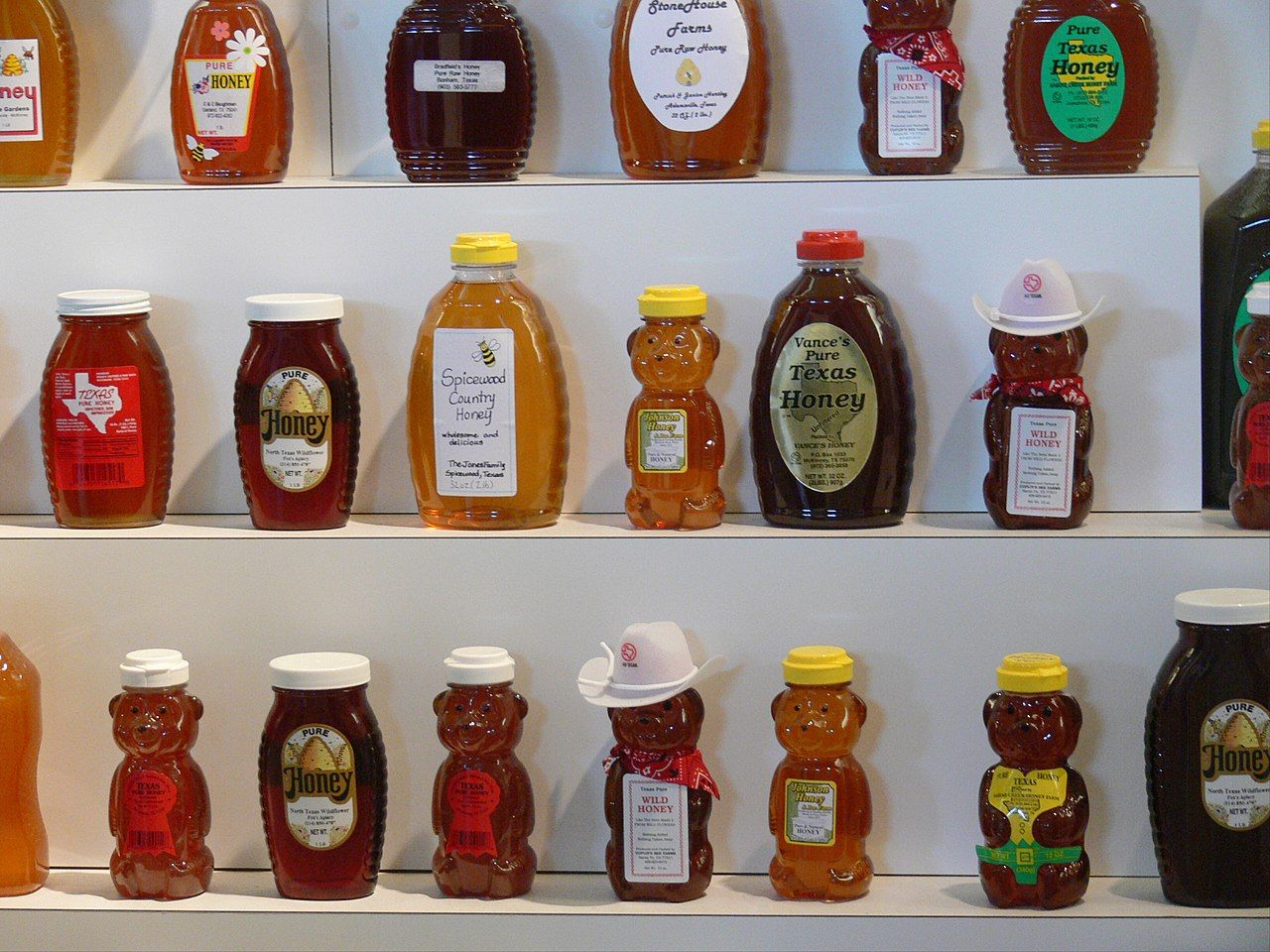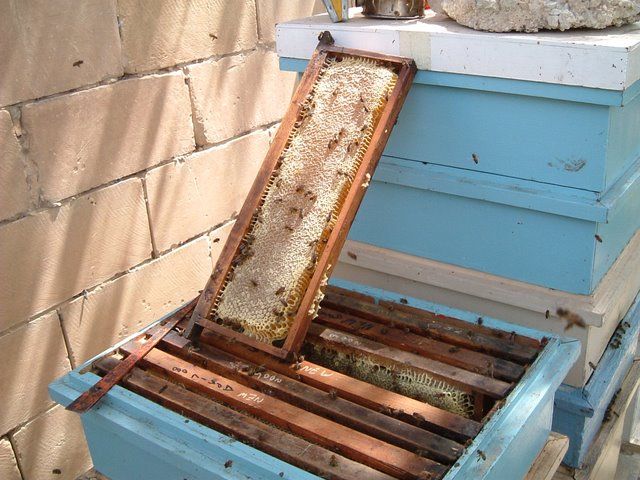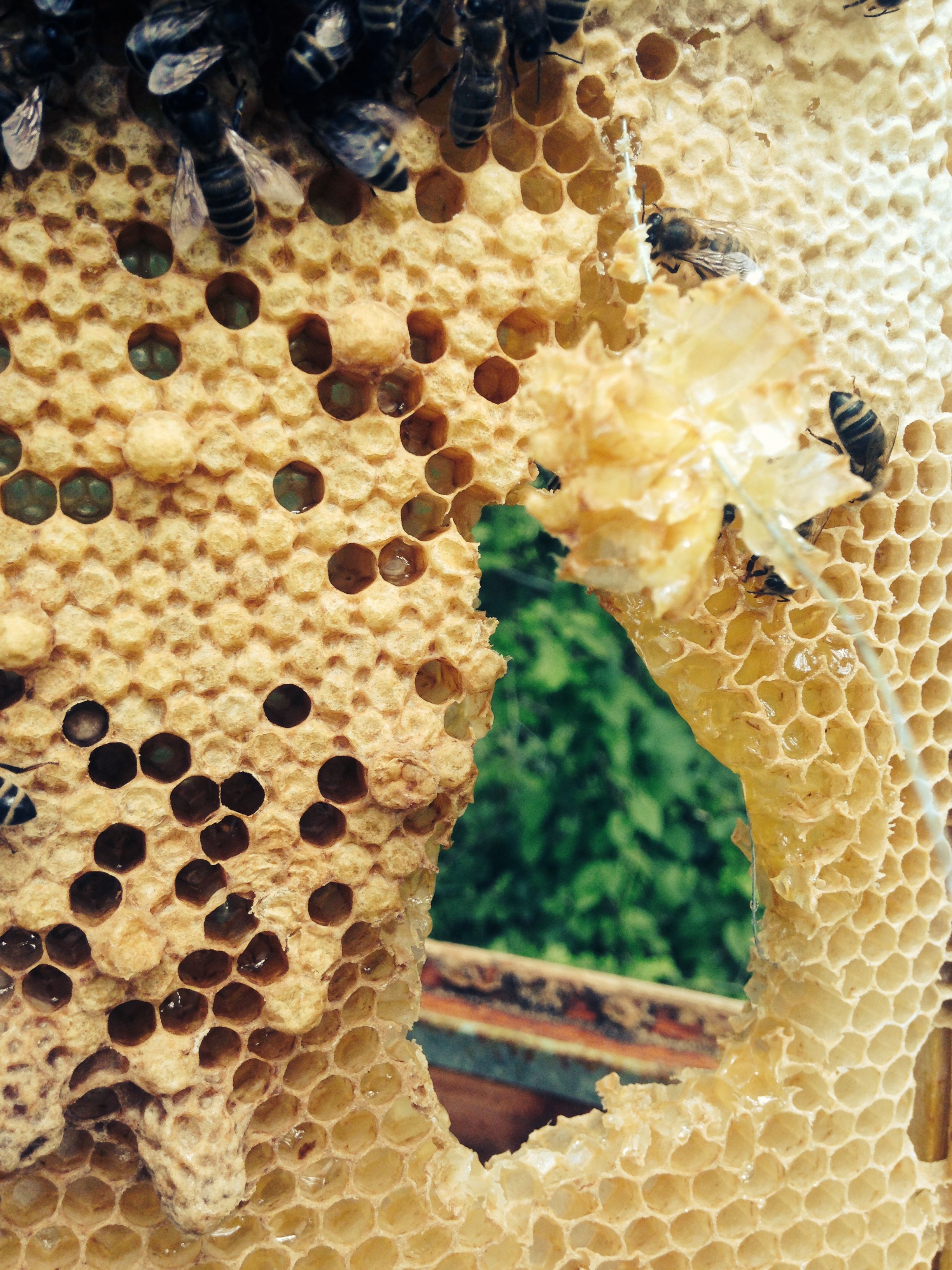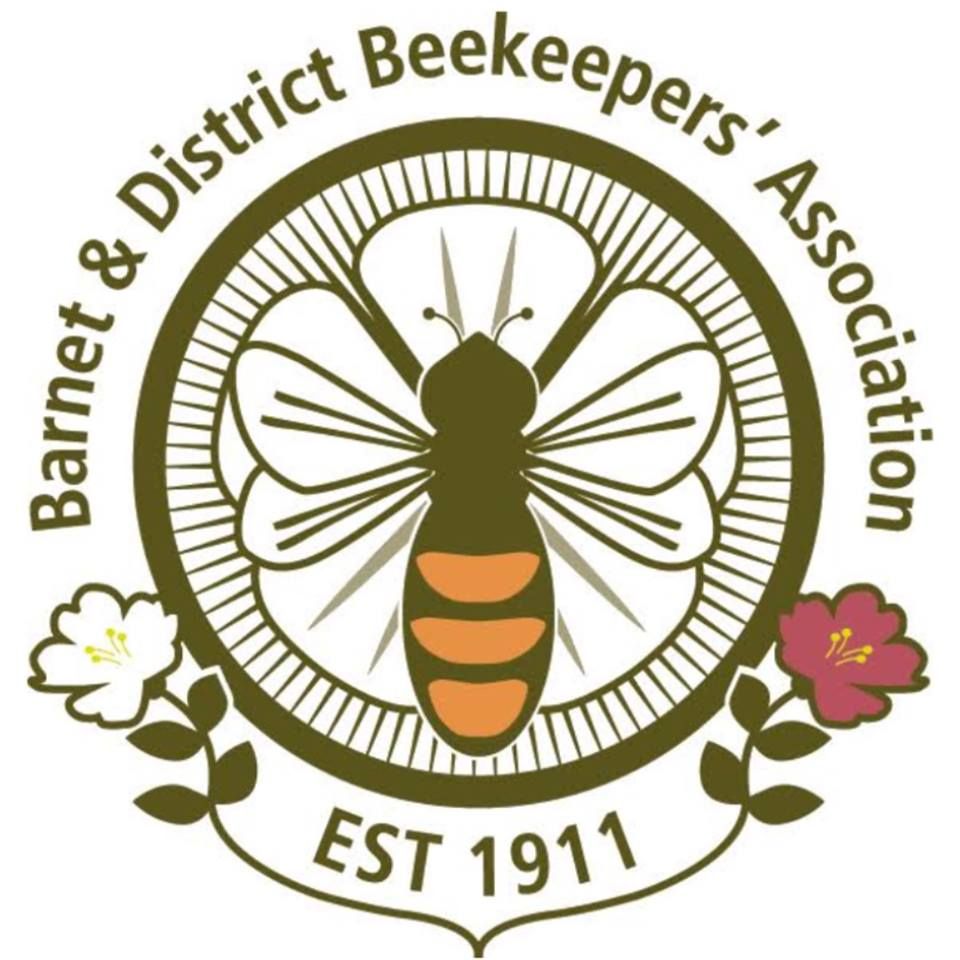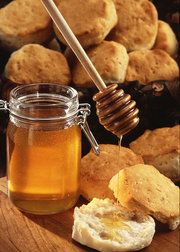
Honey is a sweet and viscous fluid produced by bees and other insects from the nectar of flowers. Honey is significantly sweeter than table sugar and has attractive chemical properties for baking. Honey has a distinctive flavour which leads some people to prefer it over sugar and other sweeteners.
Liquid honey does not spoil. Because of its high sugar concentration, it kills bacteria by plasmolysis. Natural airborne yeasts cannot become active in it because the moisture content is too low. Natural, raw honey varies from 14% to 18% moisture content. As long as the moisture content remains under 18%, virtually no organism can successfully multiply to significant amounts in honey.
The study of pollens and spores in raw honey (melissopalynology) can determine floral sources of honey. Because bees carry an electrostatic charge, and can attract other particles, the same techniques of melissopalynology can be used in area environmental studies of radioactive particles, dust, or particulate pollution.
A main effect of bees collecting nectar to make honey is pollination, which is crucial for flowering plants.
